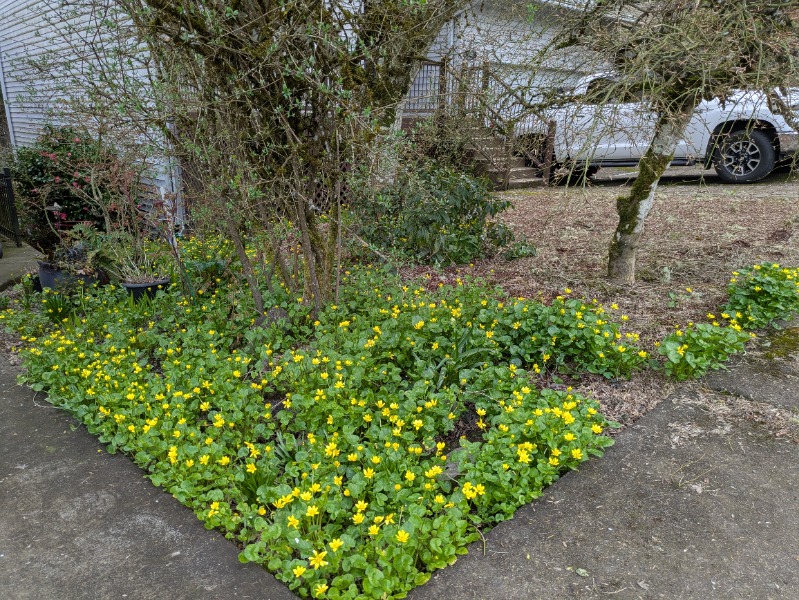Lesser Celandine (Ficaria verna) on Apr 1, 2025
Submitter does not have a specimen
Description of specimen
Large cluster of lesser celendine, clearly spreading and seen starting in other areas nearby. Property bordering on habitat/nature area.



Thank you for posting this. Lesser Celandine is a terrible invasive. It's listed as a Class B weed in Oregon and Washington. It's not an EDRR Species so we will not be able to treat it. We have however added this to our map tracking the spread of invasives throughout the county. Thanks to your post if it gets into the neighboring wild space, we will have a better idea of where it came from.
It is a bit late in the year for a chemical treatment on this but if you wanted to begin eradicating this patch it would be a good idea to cover it with some landscaping fabric and mulch. This would smother the plant and make it easier to treat in the future. it would be a good idea to prioritize doing this near the sidewalk to prevent the spread of seed. Removal efforts will be needed in the next year to keep pushing back this thick colony.
Thanks again for posting!
Coleman Hepner
April 3, 2025, 7:43 a.m.